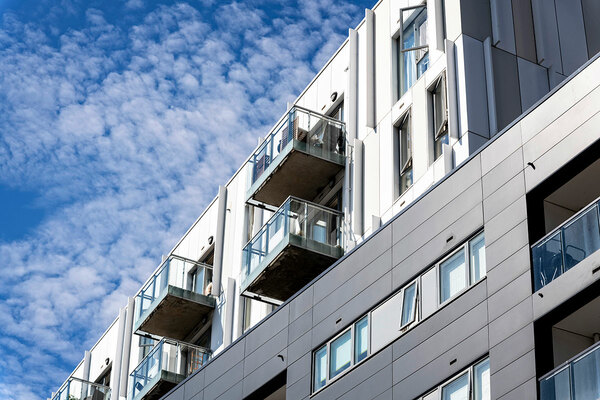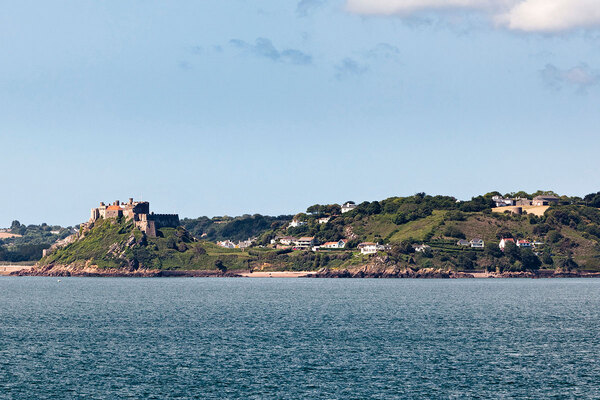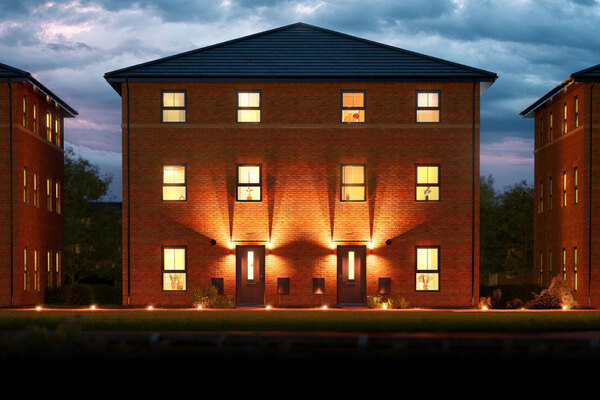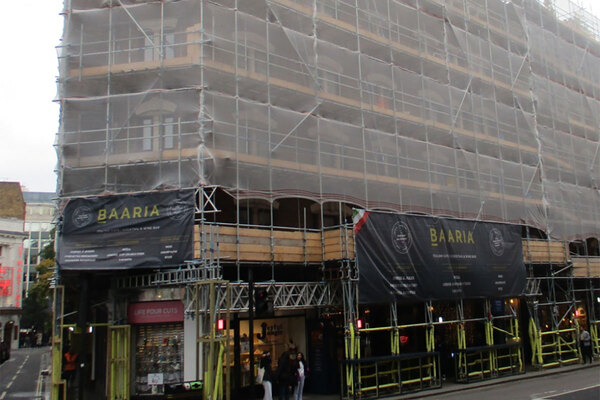You are viewing 1 of your 1 free articles
Major mortgage lenders reveal mixed approach on cladding as new guidance takes effect
Major banks have committed to lending on properties with potentially dangerous cladding so long as a remediation plan is in place, after new guidance came into force yesterday.
Six of the UK’s biggest banks have now updated their policies following new guidance published last month by the Royal Institution of Chartered Surveyors (RICS) to help valuers assessing flats in blocks with cladding.
UK Finance, which represents the banks, has said it will give leaseholders and prospective buyers “more clarity on purchasing homes with building safety issues”.
The banks will offer mortgages on properties in blocks above 11 metres where there are safety issues, but an agreed remediation plan funded by either the government or a developer must be in place.
Some may also be willing to lend to leaseholders who are covered by protections in the Building Safety Act, even where a plan is not in place.
It is the latest effort to end a deadlock which has trapped residents in flats they are unable to sell as they endure an interminable wait for safety work to begin.
A residents’ group said the change “could be a step forward”, but added that the “reality on the ground” may not “live up to the positive noises”.
Responding to requests from Inside Housing, the banks indicated variations in policies – with some likely to still request ‘EWS1’ forms confirming the safety of the external wall in some circumstances.
Bank responses
Santander told Inside Housing, as of today, it will consider mortgage applications in England on properties in buildings “irrespective of the building’s height or whether remediation work has commenced, provided the correct evidence is shared”. It said it will not require an EWS1 form “unless specifically requested”.
HSBC said it may still require an EWS1 form in certain circumstances as part of the valuation process.
The bank said it will consider cases where flats have failed their EWS1 review but have funding in place to fix it.
An HSBC UK spokesperson said: “These changes will provide valuers with improved guidance to enable lending on properties with cladding, while providing more clarity and certainty for those living, or wanting to purchase a property, in a block with cladding.”
Nationwide said if a property has as EWS1 form with a rating of A3 or B2, it would would need “confirmation that there is a clear path to the building being remediated, an outline of the cost of the works and who is paying for them”.
A spokesperson added: “Assuming that is all confirmed in writing, we would lend on the property, subject to our normal lending policy and checks. However, while that confirmation is being received, we would also need assurance that there are adequate interim safety measures in place.
“Nationwide will lend to leaseholders living in properties impacted by cladding, where those properties are covered by the government or developer remediation schemes – subject to our normal lending policy and checks.”
A rating of B2 is the lowest grade available after an EWS1 assessment – meaning that the external wall contains combustible materials and remedial work is required to make it safe.
A3 implies that while the external wall does not contain combustible materials, work may be required to fix attachments such as combustible balconies.
Either rating has typically resulted in the rejection of a mortgage application in recent years – meaning properties can only be sold to cash buyers, often at a huge discount.
NatWest said that from today, it will support “more customers with a mortgage on a building with cladding”.
A spokesperson added: “The new process will support flats with cladding systems rated A3 or B2 for England only and leaseholders in eligible buildings will now need to complete and submit a leaseholder Deed of Certificate to the building freeholder.”
Lloyds Banking Group said it updated its position on 19 December, ahead of other banks. It said it will no longer require an EWS1 form to “progress applications" for properties in England that are in buildings five storeys or higher.
Jas Singh, chief executive of consumer lending at Lloyds, said: “We have worked closely with house builders and RICS to find a solution for homeowners, so we warmly welcome the updated guidance for valuers on homes with external cladding.
“While we have continued to lend on properties with cladding where possible, this move will really simplify things for those buying homes in properties of five storeys or above (11 metres). We hope this will continue to open up the market for those in affected properties, bringing peace of mind to homeowners.”
At Barclays, it is understood that from today it will lend on properties where a recognised remediation scheme is in place, based on evidence from relevant documents.
A Barclays spokesperson said: “We are pleased to announce new policy changes to support lending on properties impacted by fire safety issues. As a responsible lender, we will monitor our policies and processes to ensure we continue to help customers reach their homeownership goals.”
Last March, UK Finance said its members were taking “necessary steps” to facilitate lending on a property if a plan to replace dangerous materials had been set out.
However, Inside Housing revealed that six months later, the majority of banks had still to commit to offering mortgages on residential blocks with remediation plans in place.
Issues remain
And despite efforts by the government to tackle the building safety crisis, there are still numerous issues affecting progress, including delays over projects due to a lack of resources.
Giles Grover, a spokesperson for the End Our Cladding Scandal campaign, said: “This could and should be a step forward for some of the innocent leaseholders trapped in the building safety crisis. However, as has been the case for some time now, we need to see whether the reality on the ground lives up to the positive noises.
“We fear that uncertainty is set to continue, particularly around the impact on property values… or for those arbitrarily ruled out of help.
“We fear that uncertainty is set to continue, particularly around the impact on property values… or for those arbitrarily ruled out of help”
“The return of true confidence in the full market and a comprehensive end to this crisis may still be some way away.”
The EWS1 form was created by RICS in an attempt to give surveyors a means to assess the risk from external walls in the aftermath of the Grenfell Tower fire.
It was made necessary by a government advice note which suggested all combustible materials should be removed from buildings unless the entire build-up had passed a large-scale test.
Poor government guidance and non-prescriptive regulations, combined with non-compliance by builders and poor enforcement by inspectors in the decades before Grenfell, resulted in tens of thousands of tall buildings with dangerous materials.
In addition, buildings below 18 metres were subject to no limits on combustible materials according to official government guidance – a position which was only revised last year.
This meant that when the government suddenly insisted that all combustible materials required removal, the market froze and flat sales crashed. Hundreds of thousands of people have faced long delays selling their property as a result – with many missing out on jobs and the chance to have children.
The government has made several attempts to undo its mishandling of the crisis in the years since, but none have yet unstuck the market, with lenders continuing to take a cautious approach to offering mortgages on affected buildings.
One leaseholder in a block with no remediation plan told Inside Housing: “You get the usual sharing of these articles from friends and family who say it’s all over. But the difficulty we have is we still don’t have a remediation plan and nobody is committing to fund it, so I don’t think the banks would lend on my flat.”
Sign up for our fire safety newsletter
Already have an account? Click here to manage your newsletters











